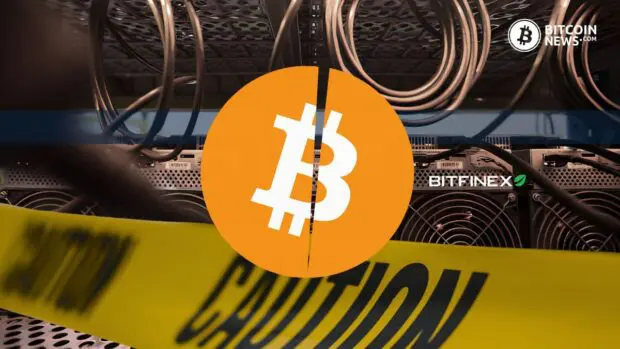Bitcoin, the world’s leading digital asset, is gearing up for its fourth halving event, scheduled around April 20th. This next Bitcoin halving, marked by a reduction in the block rewards miners receive for validating transactions, has sparked discussions and concerns within the Bitcoin community. A recent report by Bitfinex, raises arguments about the implications of this hugely anticipated event.
Halving Overview
Bitcoin’s halving events occur approximately every four years and are designed to enforce scarcity by reducing the rate at which new bitcoin are created. The impending halving will slash the current block reward of 6.25 bitcoin per block to 3.125 bitcoin. This reduction in rewards is expected to have significant ramifications for miners, particularly smaller operations.
Related reading: What Makes Bitcoin Scarce?
Financial Strain on Miners And Security Concerns
The halving poses a financial challenge for miners, as it instantly halves their revenue from mining activities. Bitfinex, a major digital asset exchange, warns that this could lead to increased financial strain, potentially forcing smaller and less efficient miners out of business. According to Bitfinex, this could result in a market dominated by larger, publicly traded mining companies.
The halving is also raising concerns about the total network hash rate, a measure of mining power. Less efficient miners might struggle financially, leading to some mining rigs being shut down. Analysts from Galaxy Digital predict that after halving, up to 20% of Bitcoin’s hash rate could go offline, leaving only the most efficient rigs operational.
Related reading: Bitcoin Mining Difficulty Hits ATH of 81T as Halving Looms
This reduction in hash rate could have ramifications for Bitcoin’s network security. The report asserts that the decentralization of Bitcoin’s network relies on a diverse array of miners competing to validate transactions. However, a reduction in block rewards could diminish miners’ incentives, potentially weakening the network’s security. Bitfinex highlights the risk of increased centralization, which could lead to censorship of transactions and vulnerability to attacks.
Market Dynamics and Regulatory Scrutiny
Changes in market dynamics, including the introduction of spot Bitcoin ETFs, may influence the outcome of this halving event. Coinbase, a prominent digital asset exchange, suggests that these ETFs could create new demand for bitcoin, potentially altering the historical patterns observed in previous halvings.
Moreover, regulatory scrutiny looms over the Bitcoin mining industry. Governments worldwide, including the Biden administration in the United States, are considering stricter regulations due to concerns about the environmental impact of Bitcoin mining. The proposed Bitcoin mining energy tax could significantly impact the economic landscape for miners in the US, prompting them to innovate towards more energy-efficient technologies or relocate to jurisdictions with less stringent regulations.
Related reading: Bitcoin’s Net-Positive Environmental Impact: List of Recent Studies
Next Bitcoin Halving: Optimistic Outlook
Despite the challenges posed by the halving, there are potential positive outcomes for the mining industry. Historically, halving events have been followed by price rallies, driven by reduced supply and growing demand. Bitfinex suggests that “If the price of Bitcoin rises sufficiently, it could offset the reduced block reward, maintaining or even increasing mining profitability. This price appreciation is critical for encouraging continued investment and participation in mining activities.”
Continued innovation in mining technology, coupled with access to abundant and cheaper renewable energy sources, could further bolster the mining industry. Lower operational costs and increased energy efficiency could make mining more sustainable and profitable, potentially attracting more participants to the network.
Coinbase adds:
“We believe the current price move is only the beginning of a longer bull run and that it will take further price appreciation in order to drive supply vs demand dynamics into balance.”
Conclusion
As Bitcoin prepares for its fourth halving, stakeholders in the Bitcoin community closely monitor the potential impacts on miners and the broader market. While concerns about centralization and regulatory scrutiny persist, there are optimistic outlooks for the mining industry, fueled by potential price rallies and technological advancements.
In navigating the new economic landscape post-halving, miners may need to adapt to changing market dynamics and regulatory environments. However, with resilience and innovation, the mining industry continues to play a crucial role in maintaining the security and decentralization of the Bitcoin network.
“Centralization risks could mean the potential censorship of transactions and increased vulnerability to coordinated attacks or regulatory pressures,” warns Bitfinex, highlighting the importance of maintaining Bitcoin’s ethos amidst evolving market dynamics.










